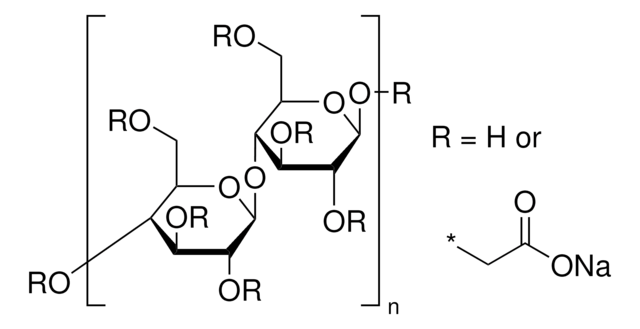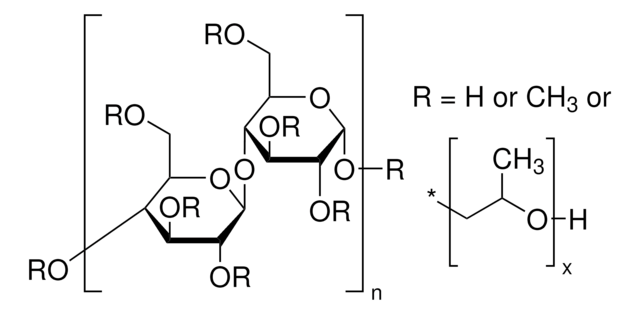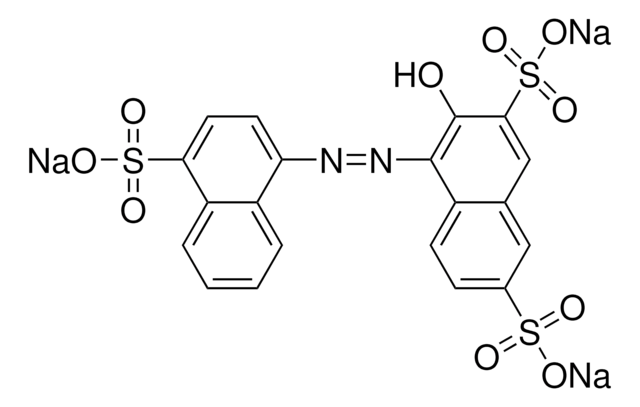C4888
Carboxymethylcellulose sodium salt
Medium viscosity
Synonym(s):
Sodium carboxymethylcellulose
About This Item
Recommended Products
biological source
wood (pulp)
Quality Level
form
powder
color
light yellow
useful pH range
(20 °C, 10 g/L, 68 °F neutral)
viscosity
400-800 cP, 2 % in H2O(25 °C)(lit.)
mp
> 300.05 °C ((> 572.09 °F))
solubility
water: soluble
cation traces
Na: 6.5-9.5%
storage temp.
room temp
SMILES string
[Na].OC(C(O)C(O)C=O)C(O)CO.OC(=O)C
InChI
1S/C6H12O6.C2H4O2.Na/c7-1-3(9)5(11)6(12)4(10)2-8;1-2(3)4;/h1,3-6,8-12H,2H2;1H3,(H,3,4);
InChI key
DPXJVFZANSGRMM-UHFFFAOYSA-N
Looking for similar products? Visit Product Comparison Guide
General description
Low, medium and high viscosity CMCs are all used as suspending agents. Low viscosity CMC is usually used in "thin" aqueous solutions. Medium viscosity CMC is used to make solutions that look like a syrup. High viscosity CMC is used to make a mixture, which resembles a cream or lotion.
Application
Preparation Note
The key to dissolving carboxymethylcellulose is to add the solid carefully to the water so that it is well dispersed (well-wetted). Adding the solid in portions may be necessary. Adding water to the dry solid produces a "clump" of solid that is very difficult to dissolve; the solid must be added to the water. Stir gently or shake intermittently; do not stir constantly with a magnetic stirring bar. High heat is not needed and may actually slow down the solubilization process. A mixing device, such as an impeller-type agitator which produces a vortex, would allow the powder to be drawn into the liquid, but it may produce some shearing.
Other Notes
Storage Class Code
11 - Combustible Solids
WGK
WGK 1
Flash Point(F)
Not applicable
Flash Point(C)
Not applicable
Personal Protective Equipment
Choose from one of the most recent versions:
Already Own This Product?
Find documentation for the products that you have recently purchased in the Document Library.
Customers Also Viewed
Our team of scientists has experience in all areas of research including Life Science, Material Science, Chemical Synthesis, Chromatography, Analytical and many others.
Contact Technical Service





